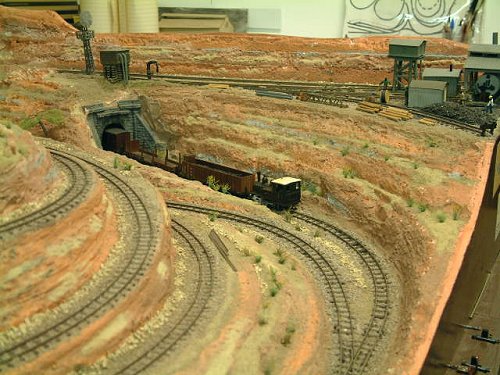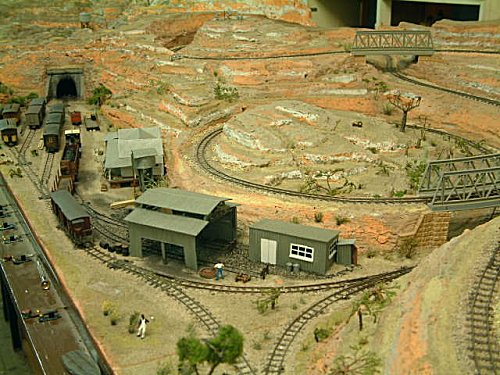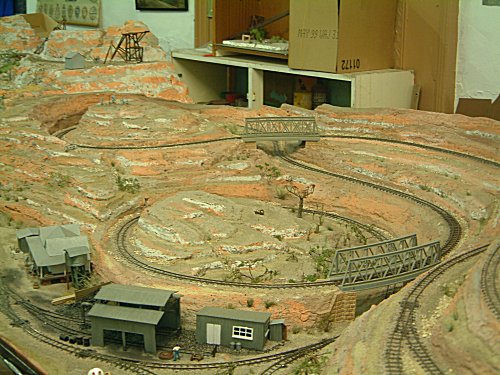The Koatanga Railway
Modeller: Tony Williams

The line is set in the coastal margins of German South West Africa, now known as Namibia, in the colonial days of the late 19th and early 20th centurys. It was inspired by an article in an early Continental Modeller allied to my dislike of making trees! The thought also occurred that it could be an interesting demonstration of how railways overcome gradients. As a consequence of this there are gradients, tunnels, spirals and zig-zags in profusion.

A train leaving
the tunnel from the reverse spiral. Above is the boilerhouse
building of the
Koathanga diamond mine.
The German colonial railways of 600mm gauge ran inland, from the coast, to the mineral bearing areas. The story is that surplus locomotives and stock from Germany and Austria were shipped off to do duty south of the equator. This accounts for the extensive use of Liliput and Roco products.

Goods train arriving
at Dambalastdorp. The military are guarding a diamond shipment.
The tunnel leads
on to the viaduct over Skipstad Kloof and Tipstroom.
The original sectionwas built to fit in my work room but, like Topsy, it just growed and now is over 20' long. Construction is conventional if a little "belt and braces". Scenery is the customary polystyrene coated with a horrible mix of polyfilla, plaster, sawdust, etc. The track is Peco with some very tight curves on the Y. Points are manually operated by coat hangers (hence the name of the layout) working through slides made out of curtain rail.

Probably
the most distinguishing feature of the layout is its bright desert sand
colour (and lack of trees of course!).
Neton Miniature Railway